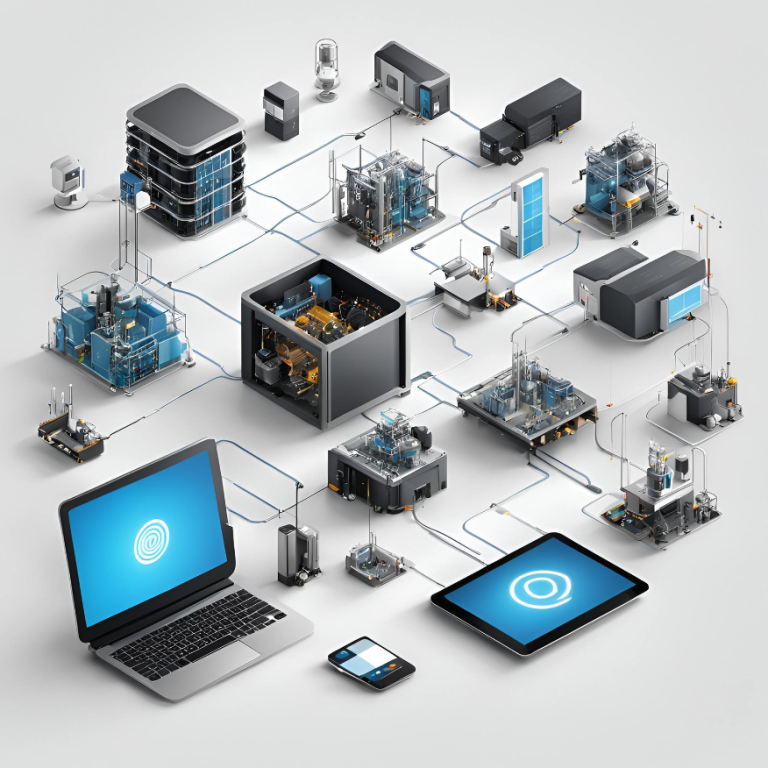M2M (Machine-to-Machine) communication enable devices to communicate with each other and exchange data. M2M is fundamental to the Internet of Things (IoT), which connects billions of devices worldwide.
Key aspects of M2M are data collection and exchange, automation and real-time communication.
Components of M2M
- Hardware: sensors, actuators, communication modules, and central control system
- Connectivity: M2M requires connectivity through technologies, such as mobile networks, LPWAN, satellite, Wi-Fi or Bluetooth
- Software: Embedded systems, data analysis tools, and management systems
Examples of M2M applications include energy management, industrial automation, supply chain monitoring, inventory management and fleet management.
How does M2M work?
Across different applications, M2M enables device-to-device communication. Sensors and actuators are used to measure data, such as temperature, pressure, velocity, vibration or location, from devices. This data is then transmitted over a network to a central system for analysis and automated decision-making. For example, a tracking sensor collecting location data and relaying this data to a central system over the mobile network, where it can be aggregated and analysed.
The history of M2M
The history of M2M technology dates back to the early days of telemetry and telecommunications. In the 1960s, the first telemetry systems were used to monitor missiles. This was followed, in the 1980s, by the emergence of SCADA (Supervisory Control and Data Acquisition) systems, in industrial applications. SCADA systems connect machines to central systems but require a wired connection to a physical controller. The introduction of mobile networks and the Internet in the beginning of this century enabled the wider adoption of M2M technologies, as wireless connection and cloud-based storage became possible. In the past ten years, the integration of M2M with IoT has led to both a proliferation of possible applications and adoption of connected devices.
What are the advantages of M2M?
Advantages of machine-to-machine communication include increased reliability and security through remote control of devices, reduced need for maintenance and ability to do predictive maintenance.
Through increased efficiency, prevention of outages and reduction of waste M2M achieves significant cost savings. Additionally, it creates new business opportunities and enables companies to improve efficiency, productivity and customer services in existing lines of business.
In which industries is M2M applied?
M2M has a wide range of applications, including:
- Energy: Smart meters, converters in solar panels and energy management systems.
- Transport and logistics: Fleet management and tracking systems.
- Healthcare: Medical devices and patient monitoring systems
- Industry: SCADA systems and industrial automation.
The future of Machine-to-Machine
– 5G networks: As more 5G networks become available across the globe, the speed and reliability of M2M communications significantly increased. However, the sunset of 2G and 3G, are causing problems for solutions that have not yet been futureproofed.
– 6G networks: In the future, 6G’s ultra-high data rates and increased capacity will support massive deployments and enable more real-time applications. Also, ultra-low latency will minimize delays, which is important for applications like autonomous vehicles and industrial automation.
– Edge computing: More local processing will be done by devices, increasing speed and efficiency of processes.
– AI and Machine Learning: AI and ML enable machines to analyse advanced data, make informed, autonomous decisions and perform complex tasks.
Conclusion
M2M is an essential technology that makes businesses run more smoothly and economically. From energy to healthcare, M2M provides solutions and benefits for a wide range of industries. For more information on how M2M can transform your business, contact The IoT Guide at hello@theiotguide.com or through our contact form.
